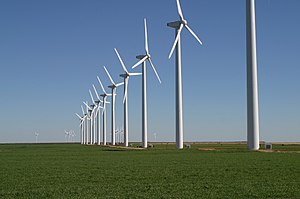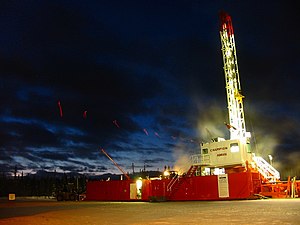Having been to Fort McMurray, the economic engine of Alberta, Canada, and having seen its incredible growth first hand, I was not surprised to learn of the $258-million-dollar airport expansion. Growing transportation capacity is, in many ways, a catalyst for broader economic development, and there are few places in North America that have the growth potential of Fort McMurray.
As the nexus of Canadian Oil Sands development, Fort McMurray is essentially ground zero in the great energy debate surrounding the resource and the infamous TransCanada pipeline. While the hyperbole surrounding the debate rages on, those responsible for managing growth know that development of the Oil Sands will move forward and they must anticipate and plan for this growth. Air terminals are hubs of economic activity and help spur growth by providing greater access for goods and people. The airport expansion, then, is not a luxury, but a vital necessity.
I met with Melissa Blake, the Mayor of the Regional Municipality of Wood Buffalo, a few years ago when I wrote an article on the Oil Sands and its development. At the time, as now, Melissa told me that the Wood Buffalo region, which lies within the Oil Sands and home to Ft. McMurray, had doubled in population in the last ten years and expects the population to double again in the next fifteen. Infrastructure and development are Melissa’s passions. Essentially, as is pointed out on the Fort McMurray Airport Authority website.
“The Ft. McMurray Airport (YMM) is the fastest growing airport in Canada with a passenger growth rate of 27% year to date in 2012.YMM served over 958,000 passengers and facilitated over 80,000 takeoffs and landings on our runway. With an existing terminal building built to accommodate 250,000, YMM is significantly undersized for the existing passenger demand…YMM is an important economic generator for the city and region, generating over $363 million in economic activity…The Fort McMurray Airport forms part of the gateway to this region and it is the key to the transformation of Fort McMurray from small town to dynamic city.”
And like the region itself, which has seen 125 percent population increase since 2000, the terminal capacity (currently 250,000) is anticipated to need to accommodate 1.5 million. This is why businesses are working with Municipal leaders to serve the needs of the travelling public.
Increasing their ability to reach out to the world, Fort McMurray residents and carriers, via expanded air-route capacity, chose Denver as one of their first nonstop destinations. At the inaugural flight ceremony, Kim Day, the Denver International Airport Manager remarked, “Denver was selected as Fort McMurray’s first U.S. destination because of our unique geographical location in the center of the U.S. and a robust network.” As the world’s 13th busiest airport, DIA has facilitated economic growth to the tune of $22 billion dollars and the airport sees 50 million passengers pass through their gates annually. Not only does the airport provide access to goods and services, human talent is also of paramount importance. Denver and the Front Range are in the middle of an energy renaissance and many large energy companies like Anadarko, Encana, Noble Energy, etc., have regional or North American headquarters located in Denver. Therefore, Denver was the easy choice for carriers like United, who started the first daily nonstop flight from Fort Mac to Denver this last June.
I spoke with Martin Kammerman, Senior Manager of Network for United, and asked him about the decision to open up the only daily nonstop flight into the U.S. from Fort McMurray. Essentially, the decision was threefold:
So number one, we’re helping to accommodate customers by providing something that didn’t exist until today, which is basically, a flight south. Number two; it just so happens that the places United flies to happen to be very energy oriented. Denver has easy connections to Houston. And, surprisingly, people go to North Dakota from Denver because the drive to the northern U.S. States (from Canada) is too difficult otherwise. My third point, and one worth noting, is that when people are travelling to or from Fort McMurray, they have to make multiple connections, especially going to the U.S. and beyond. So what this flight to Denver does is it allows you to make a single connection, rather than a double or triple connection, to 57 places. So there are 57 destinations that are suddenly much easier to get to or from than there were before there was a flight to Denver. It’s all about finding something that customers want to fly on and finding ways to accommodate them.
Since Fort McMurray is also one of those places where incomes are rising, there will continue to be an influx of retail and service providers to support the growing population and their disposable income. Thusly, the expansion of a transportation hub facilitates not only the growth of the Oil Sands industry, but of all the support networks needed to help the energy revolution flourish.





